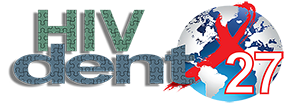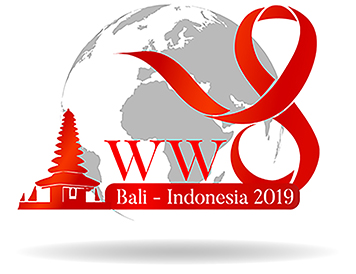Oral Medicine Residency Program, Faculty of Dentistry, Universitas Padjadjaran, Bandung, Indonesia
Oral Medicine Department, Faculty of Dentistry, Universitas Padjadjaran, Bandung, Indonesia
Abstract
Objective: Tuberculosis is the most common of opportunistic infection affecting HIV- infected individuals. Acute kidney damage is also common in HIV-infected individuals as a result of volume depletion, septicaemia, and nephrotoxic medication. Current first-line HIV therapy uses tenofovir disoproxil fumarate (TDF), which has the potential to be nephrotoxic. The case report describes the clinical feature of some oral lesions and their comprehensive treatment in AIDS patient with tuberculosis and kidney damage.
Case: A 26-year-old man diagnosed with AIDS, acute kidney injury (AKI) and tuberculosis (TB) was referred to Department of Oral Medicine complaining of an ulcer on the dorsum and lateral border of the tongue. Extraoral examination showed dry and desquamated lips, and a fissure on the corner of the mouth. Intraoral examination showed multiple ulcers and a white plaque on the dorsum and lateral border of the tongue. Abnormal laboratory test results included hemoglobin 11,6 g/dL, thrombocyte 537.000/uL, a blood urea nitrogen (BUN) level of 186 mg/dL, and creatinine was 4,35 mg/dL. A smear sample was taken from the floor of the ulcer on the lateral border of the tongue, and the mycobacterium tuberculosis culture showed a positive result. The diagnosis of the oral lesions wa based on the clinical examination together with the laboratory findings. The diagnosis included an oral tubercular ulcer, oral candidiasis, angular cheilitis, and exfoliative cheilitis.
Management: The patient was given chlorhexidine digluconate mouthwash 0,12%, nystatin oral suspension, miconazole oral gel, and petroleum jelly. Antituberculosis (rifampicin, isoniazid, pyrazinamide, ethambutol), antiretroviral, cotrimoxazole, ceftriaxone, and omeprazole were given by an Internist. The BUN levels decreased as much as 120 mg/dL and 25,6mg/dL respectively within two weeks. Another laboratory result showed CD4 count 35 cell/µL. An improvement of the oral lesions was visible after the treatment.
Conclusion: HIV-infected individuals are at increased risk for tuberculosis and kidney disease that can manifest in the oral cavity. A comprehensive treatment approach is essential for successful treatment of such complex cases.
Keywords: Acute kidney injury, HIV, oral lesions, tuberculosis


